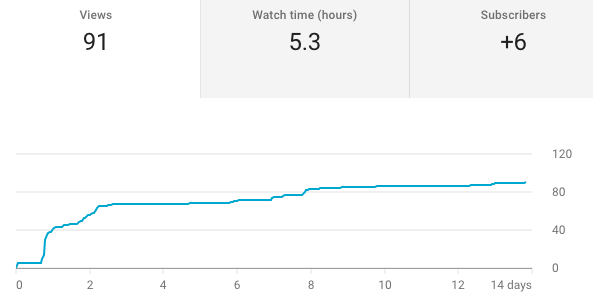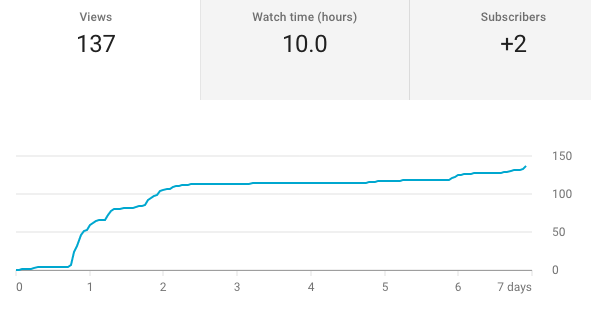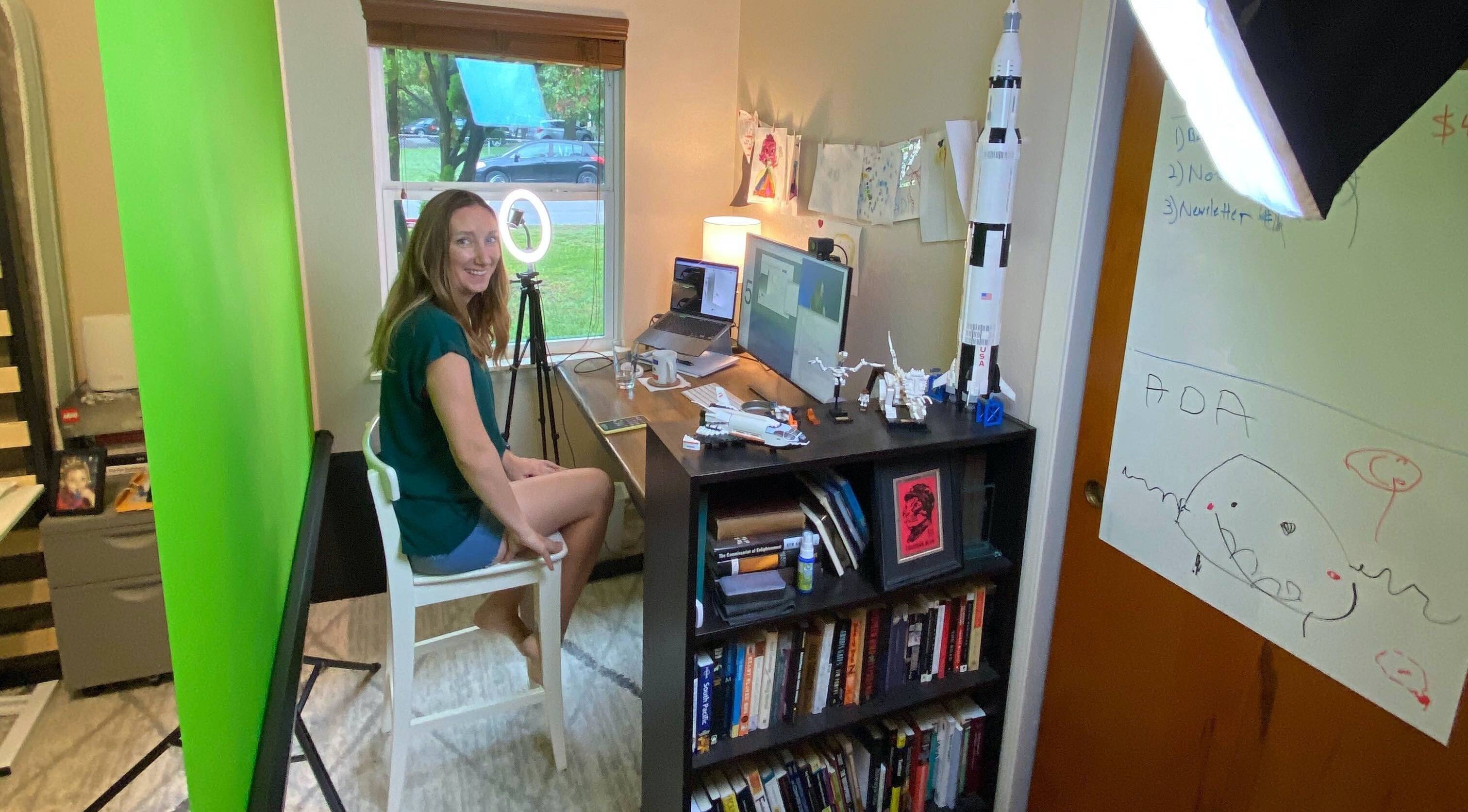In every marketing job I’ve ever had, there was always someone who wanted to “do video.” Maybe it was an exec whose niece once made a viral TikTok video, and wanted us to do the same. Or a new coworker with a lot of energy and enthusiasm, or a leader who wanted the brand to branch out. The conversation would always start with someone excitedly offering the suggestion: “Hey team, what if we did a podcast!? Or a vlog!”
And every single time, I would instinctively recoil at the suggestion. Doing video or audio well is hard. You need new software, good recording equipment, editing skills, a quiet place to record, and time to put all this together. And most marketing teams are already stretched for resources. So my reaction was almost always to gently redirect the suggestion and move on.
However, if you’ve been paying attention, you've likely noticed I didn’t reject the idea of using video for Gradient Works. And video could be a good choice for your company too, if you’ve thought through the process and your desired outcomes. Here are a few tips for thinking through a video content strategy for your own sales and marketing teams to make sure it's worth what you put into it.
Video is hard to do well
First, consider the effort video requires. Every hour of video shot takes 3-4 additional hours to put together for public consumption. You’ll need to prep your set and test your equipment. Once you’ve recorded the video - assuming you do it in one take, which you rarely will - you need to watch the video, probably a few times. You’ll need to edit, and add in titles, logos and images, maybe music. You’ll have to upload and write copy to accompany the video.
And the financial cost can really add up - you might need a better video camera, better lighting, a better microphone, reliable internet, and so many cables and dongles. What about a green screen? Custom graphics? Music? Editing software? An agency or new hire with podcast or video experience?
There may be occasions when a more casual video can work for you. Someone on your team can film a quick video from their desk, and it’ll be fine. But since professional-quality video is now possible for anyone to make, most audiences tend to expect something more polished.
Now, none of this means you shouldn’t do video. Video allows you to showcase your company, product and team in more dimensions than other media. Video is richer than text or voice alone. All I’m asking is that you don’t enter into a video project lightly.
Understand what your audience wants
Think carefully about what you want to use video for. Who is your audience? Where do they spend their time? What will they get out of a video that they couldn’t in text form? If you’re showcasing your product, visuals are almost always better. And in many cases, people connect more deeply when they can see someone else’s face, so video for sales and training purposes can be great. If you know your customers spend a lot of time on social media, then creating engaging content that will stand out on those channels makes sense.
Some studies and experts suggest that video content performs better than text content. Others suggest that younger audiences prefer video. Some social media platforms favor video content, so a video post may generate more impressions than a text post. But we all know social algorithms are constantly changing, so putting all your eggs in one format’s basket will never work for very long. (If you’re going this route, there are some good social video tips here.)
You need a plan for hosting your videos, and how you will promote them. Don’t just assume that if you film something, people will watch (don’t be Quibi, for example). Will you host your videos on your own site, or on a third party site like YouTube or Vimeo? Which one? Why? YouTube is better for discoverability, but Vimeo gives you more control over the final product and is best for embedding in other sites. What are your needs?
Consider how your audience will consume the video. Will they be watching on computers or phones? How long can you reasonably expect them to watch? Conventional wisdom is that shorter is usually better (and not just with video), but certain formats and topics will need to be longer to be useful. Find the right length for your use case, which may vary from video to video.
Consider the kinds of video you could make
You also need a plan for how you’re going to use the video content. Think about the differences between live video and pre-recorded video, for example. Live video is great for webinars, product demos, events. Pre-recorded video is great for sales pitches, marketing campaigns, product how-tos, thought leadership, training resources. Better yet, stream live video in front of an audience and then use that recording in other campaigns.
There are myriad use cases for video in sales, marketing, customer success and service, so don’t limit your thinking to product videos or marketing collateral. How can you use video during the sales process? You probably use Zoom already, but can you email prospects short video clips to keep them engaged? Can you use GIFs or other videos to visualize answers to common customer questions?
Think about how you can use the content exhaust from your videos. Are there shorter segments or outtakes you can repurpose? Be sure you’re getting a transcript of the video for people who prefer to read. And even a screenshot from a video could be useful later. The good news is that once you’ve got a video, you can use that content in many different ways in the future.
Do you already have some existing video content you could incorporate into a new strategy? You could crowdsource content from your employees. Find screencasts and company videos you can repurpose or add into new video content. You may not need to create entirely new content, which will save you time.
Measure everything so you know if it’s working
How will you know if your video efforts are worth it? Like everything else you’re doing in sales or marketing, have a plan for how you’re going to monitor video performance. What are you measuring? Views, watch time, video completions, comments, shares, etc… There are lots of resources to help you suss out the right metrics for marketing video effectiveness, but what if you’re using video for smaller, more targeted audiences like in sales or account management? You may not need to measure high-level video counts, but should focus on engagement metrics like repeat views, video completions, and shares.
If you’re just starting out, you might not have a lot of metrics to benchmark against, and that’s okay. Look for improvements in your metrics as you go. We’re just starting out with video at Gradient Works, so we have a lot of work to do before I feel like it’s worth the effort we’re putting into it. But like a lot of what we’re doing in these early months, the effort and the learning are part of the goal for us.
How are we doing? Our first video has done okay. Since we were starting from nothing, any views is good views. We're up to 91 views, with an average view duration of 3:31 (the video is 11 minutes long, and 23% of viewers got to the end).

Our second video has done better - 137 views in less than a week, with an average view duration of 4:34. Improvement is the goal right now.

So is it worth it?
It's too early to say if video is worth the effort for us. For now, it’s fun and getting easier. We're learning a lot about how to do this better each time - topic and speaker selection, the optimal technical setup, polishing the final product, promoting the video. That also means some of our early videos will be a bit bumpy, but they'll get better each time.
I see the potential for our videos to eventually out-perform our blog posts and other channels. But it’s still more expensive to produce than text content, which has to be a consideration since we’re such a small team and any time spent on video is time taken away from something else.
If you’re interested in using video for your sales and marketing, please stay tuned - we’ve got a seriously useful Q&A coming up with a video expert and lots of tips to make your videos more engaging. Sign up for our newsletter here, and you’ll get that video and more straight to your inbox.




